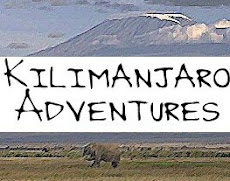
Thanks to the Adventure Blog for bringing this one to our attention in a recent post. A recent report posted on grough website highlights a number of risks that make Kilimanjaro "one of the most dangerous mountains in the world." According to Dr Windsor, a UK member of the commission advising the Union Internationale des Associations d’Alpinisme "cold, dehydration and altitude cause between 50 and 75 per cent of would-be summiteers to turn back." He also lists electrocution, HIV/AIDS and car accidents as other reasons for classifying Kilimanjaro as so dangerous.
To start off, I'm very glad that someone acknowledges how dangerous Kilimanjaro can be. Many would-be climbers think of it as a simple walk up hill for a few days and too frequently visitors opt to save a few dollars and rush up the mountain rather than take a bit more time to acclimate properly. Regardless of the mountain, it's important to always respect it and know what the real risks are.
But I also have to call into question some of the good doctors statistics. I have heard everything from as low as 1 in 10 to as high as 9 in 10 climbers reach the summit. I suspect some of this depends on the route, time of year, outfitter, etc. Certainly the Marangu route has the lowest summit rate, and I wouldn't be at all surprised if his estimates of 50 and 75 percent turning back on this route is accurate. But historically we've see over 90% of clients summit via the longer (and thus better to acclimate) routes like Machame, Lemosho and Rongai.
The title of the article is Kilimanjaro: dangers galore on the summit trail but then goes into graphic detail about how to avoid HIV/AIDS as well as electrocution. I don't know how you get to the top of a mountain, but I've never seen an article about Everest or K2 warning about sex and faulty wiring. But maybe that's the point. Kilimanjaro seems so accessible that these more 'everyday' issues are a problem.




No comments:
Post a Comment